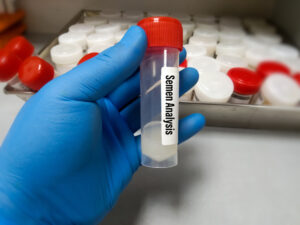
After discovering that the rates of infertility are rising, experts have cautioned that humans could confront a reproductive catastrophe if no effort is made to combat the problem.
Sperm Counts on the Decline
A study that appeared in the journal Human Reproduction Update, relying on 153 estimations from men who were likely uninformed of their fertility, shows that the average sperm count decreased by 51.6% between 1973 and 2018.
Sperm counts when from an approximated 101.2m per ml to 49.0m per ml. Sperm counts decreased by 62.3% within the same time frame.
The World is Going Sterile
In 2017, the very same research group observed that sperm count has decreased by more than half in the previous four decades.
Nevertheless, due to a lack of information for other countries around the world at the moment, the conclusions were limited to Europe, North America, and Australia. The most recent analysis includes updated information from 53 nations.
As sperm count drops, humans could suffer a reproduction crisis, research indicates. According to global data, sperm concentration has half in the past four decades, and the pace of reduction is increasing.
This is another thing low sperm counts. Low to no birth outcomes. https://t.co/ABVrpMC1QX
— Chay42 (@Chay4298) November 15, 2022
Reproductive Catastrophe on the Horizon…
After discovering that the rate of sperm count loss is rising, experts have cautioned that humans may suffer a reproductive catastrophe if no action is made to combat the problem.
Prof. Hagai Levine, the study’s lead author from the Hebrew University of Jerusalem said that he believes this is another indication that there is something amiss in the world and that we must take action.
He went on to say that he believes it is a problem that we should address immediately before it reaches a critical threshold that might not be recoverable.
Previous research indicates that fertility is reduced if the concentration of sperm falls below 40 million per milliliter. While the most recent estimate is over this criterion, Levine pointed out that this is an average, implying that the proportion of males below this level has increased.
He said that such a reduction certainly indicates a decrease in the population’s reproductive capacity.
This is Not a Drill
Although the study adjusted for characteristics such as age and the length of time men had gone without ejaculating and eliminated men with a history of infertility, it has drawbacks, notably the reality that it did not examine additional indicators of sperm quality.
Allan Pacey, a professor of andrology at the University of Sheffield who was not associated with the study, lauded the findings but remained undecided regarding the existence of a decline.
#Sperm count is not only an indicator of human fertility but also that of men's health, with low levels being associated with increased risk of chronic disease, #testicularcancer and a decreased lifespan, the researchers said.https://t.co/Lm1Xvz4PZq
— The Hindu (@the_hindu) November 15, 2022
He explained that even with the conventional method of haemocytometry, it is extremely challenging to count sperm.
He feels they have gotten better over the years as a result of education and quality control programs around the world and continues to believe this is largely consistent with the findings.”
Nonetheless, Levine rejected such concerns, remarking that the decrease has been more severe in recent years.
















